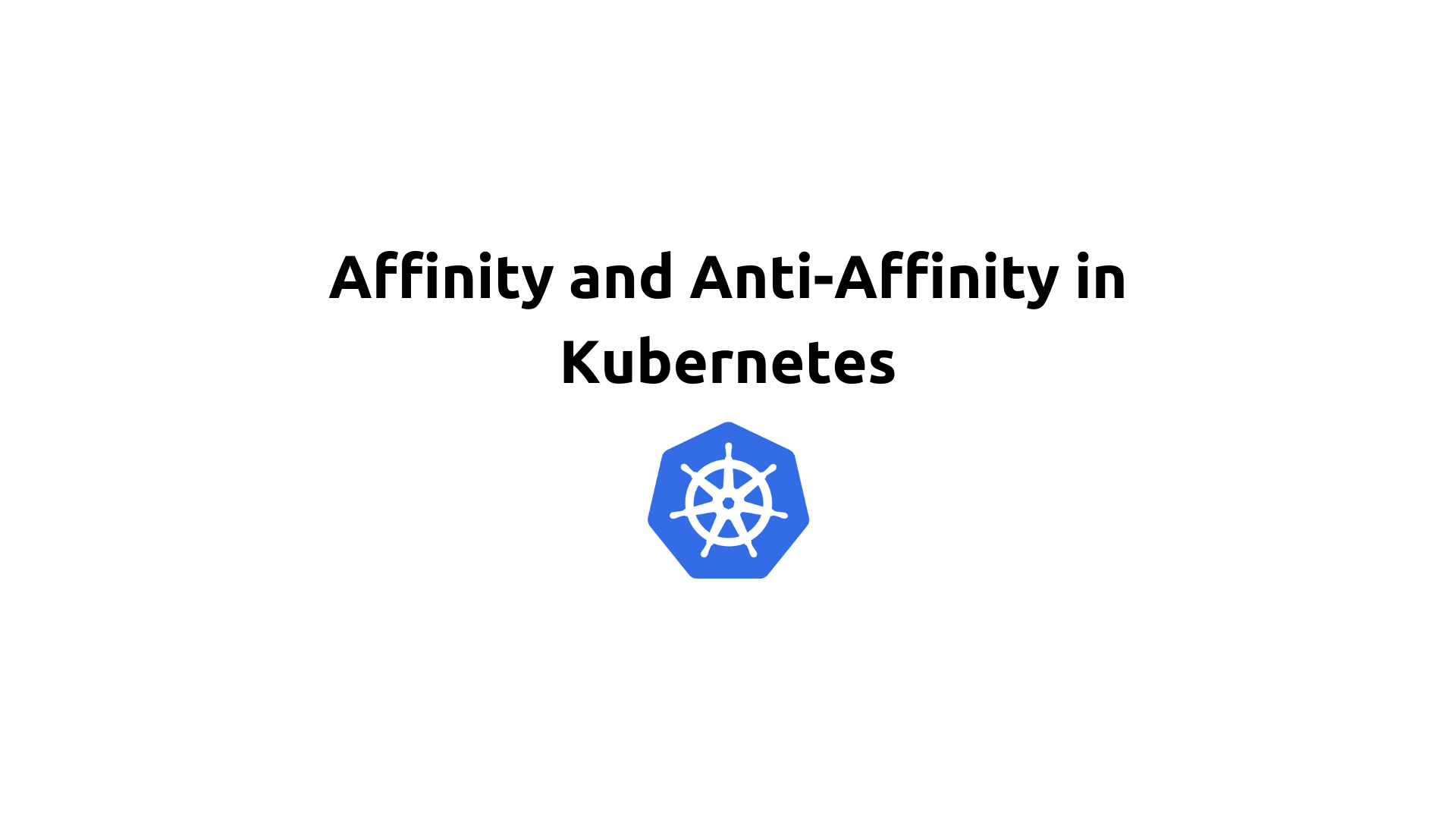Affinity and Anti-Affinity in Kubernetes
 Saurabh Adhau
Saurabh AdhauTable of contents

Introduction
In Kubernetes, affinity and anti-affinity are key concepts used to control how pods are scheduled onto nodes based on specific rules or preferences. These mechanisms play a crucial role in optimizing resource allocation, improving availability, and enhancing the overall performance of applications within a cluster environment.
Affinity
Affinity allows you to define rules that Kubernetes uses to influence where pods are placed relative to other pods or nodes. It ensures that related pods are either co-located on the same node or distributed across nodes to meet application requirements efficiently.
Types of Affinity:
Node Affinity: Directs Kubernetes to schedule pods onto nodes with specific labels, taints, or other node attributes.
affinity: nodeAffinity: requiredDuringSchedulingIgnoredDuringExecution: nodeSelectorTerms: - matchExpressions: - key: example.com/zone operator: In values: - us-westThis example ensures that pods with this affinity rule are scheduled on nodes labeled with
example.com/zone: us-west.Pod Affinity: Specifies rules for scheduling pods such that they are placed near other pods that have specific labels, preferably on the same node.
affinity: podAffinity: requiredDuringSchedulingIgnoredDuringExecution: - labelSelector: matchExpressions: - key: app operator: In values: - frontend topologyKey: kubernetes.io/hostnameHere, pods with the label
app: frontendwill be scheduled on nodes where other pods with the same label are already running.
Anti-Affinity
Anti-affinity complements affinity by specifying rules that prevent pods from being scheduled together. It ensures that pods are spread across different nodes or kept apart from each other to enhance fault tolerance and availability.
Example of Pod Anti-Affinity:
affinity:
podAntiAffinity:
requiredDuringSchedulingIgnoredDuringExecution:
- labelSelector:
matchExpressions:
- key: app
operator: In
values:
- backend
topologyKey: kubernetes.io/hostname
This example ensures that pods labeled with app: backend are not scheduled on nodes where other pods with the same label are already running.
Use Cases for Affinity and Anti-Affinity:
High Availability: Use anti-affinity to prevent related pods of critical applications from being colocated on the same node or availability zone.
Performance Optimization: Utilize affinity to colocate pods that communicate frequently, reducing network latency and improving application performance.
Fault Isolation: Employ anti-affinity to isolate pods to different nodes, ensuring that failures or maintenance activities do not impact all instances simultaneously.
Benefits of Affinity and Anti-Affinity:
Improved Performance: Pods are strategically placed to optimize communication and reduce latency between interconnected services.
Enhanced Availability: Distribution of pods across nodes improves resilience against node failures or disruptions.
Resource Utilization: Efficient allocation of resources by balancing workload distribution based on application requirements and node capacities.
Conclusion
Affinity and anti-affinity mechanisms in Kubernetes are essential for fine-tuning pod placement strategies based on application needs, operational requirements, and infrastructure constraints. By leveraging these capabilities effectively, Kubernetes administrators can achieve better resource utilization, increased availability, and improved performance within their cluster environments. These features are pivotal in managing complex deployments and ensuring consistent service delivery across Kubernetes architectures.
Subscribe to my newsletter
Read articles from Saurabh Adhau directly inside your inbox. Subscribe to the newsletter, and don't miss out.
Written by

Saurabh Adhau
Saurabh Adhau
As a DevOps Engineer, I thrive in the cloud and command a vast arsenal of tools and technologies: ☁️ AWS and Azure Cloud: Where the sky is the limit, I ensure applications soar. 🔨 DevOps Toolbelt: Git, GitHub, GitLab – I master them all for smooth development workflows. 🧱 Infrastructure as Code: Terraform and Ansible sculpt infrastructure like a masterpiece. 🐳 Containerization: With Docker, I package applications for effortless deployment. 🚀 Orchestration: Kubernetes conducts my application symphonies. 🌐 Web Servers: Nginx and Apache, my trusted gatekeepers of the web.